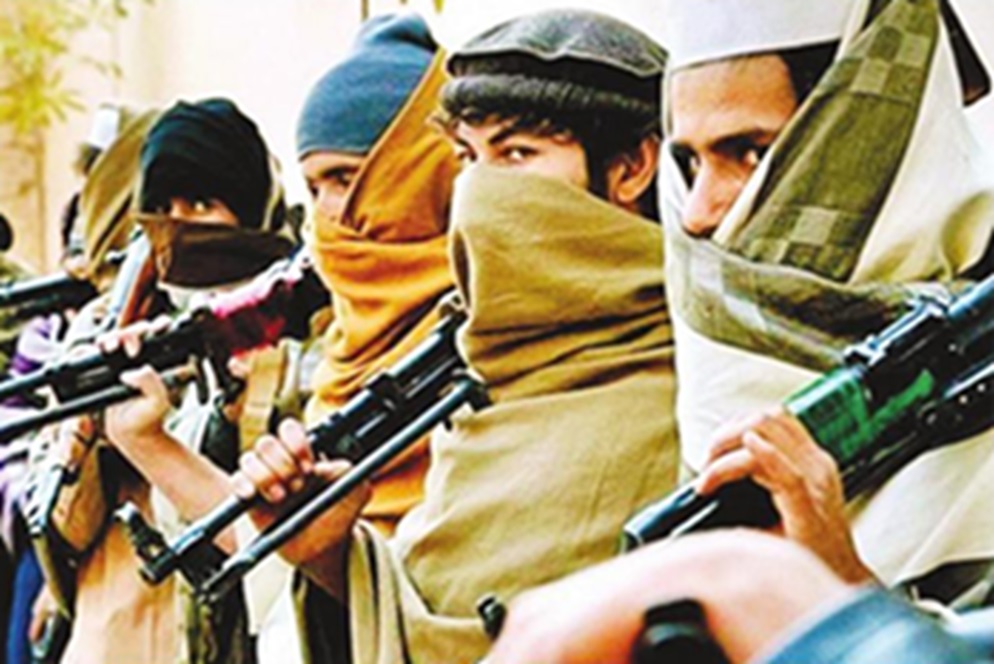The Internet of Battlefield Things (IoBT) is going to revolutionise military warfare in the coming years
Introduction
Internet is a very familiar term to all of us. It has become a necessity for our life. Mankind is graduating from a physical to a virtual world, making life much easier than before. Now humans cannot survive without the internet. The Internet of Things (IoT) is similarly changing the way we use our gadgets and more importantly handle our day-to-day activities. The gadgets are becoming smarter and more communicative with each other.
This awareness of the surroundings, when applied to the Battlefield, brings out the concept of the Internet of Battlefield Things (IOBT) or the Internet of Military Things (IoMT). This concept is a derivative of two technological developments; Networked Communication and Machine Learning.
The future of battlefields is going to change. The days of trench warfare and tank blitzkrieg are all but over. Today’s surveillance systems have the ability to detect activities as soon as they have begun and gives the adversary adequate notice and time. Also in all probabilities, the days of protracted warfare are over.
Conflicts are likely to be short and sharp. In future, the wars will be fought from scientific laboratories to the battlefield frontline soldiers. In such scenarios, the concept and implementation of smart warfare in terms of the Internet of Battlefield Things assume more relevance and importance.
IoBT
The battlefield of today is technologically very dynamic. New concepts and systems are forcing a change in the basic tactics of warfare. The evolution of drone technology has disrupted the existing concepts of warfare. This technology is cheap and easily available and can cause large-scale destruction when used in adequate numbers.
Similar technological advancements in fields of communication, electronic warfare, autonomous systems will simply overwhelm the soldier on the ground. Therefore, the soldier is required to be equipped with extra-sensory perception, which can be provided by adapting the concept of IoT to the battlefield sensors and equipment. These entities or things will have to be continually interacting with each other and human soldiers. They will include Weapon Systems, Munitions, Battlefield sensors like radars, etc, vehicles, and human wearable devices.
The capabilities will include collecting and processing information, making sense of that information and creating actionable intelligence, and undertaking coordinated activity to unleash effects that will degrade the war-making capability of the enemy. They will do this by continually collaborating, communicating, coordinating, planning, and executing the actions jointly.

Challenges of IoBT
The challenges in implementing IoBT are immense both technologically, logistically, and security-wise. For one the communications have to be seamless, flexible, and adaptive to the dynamics of the battlefield. The management of the system will involve organizing, deploying, and operating a large number of edge architecture, to achieve dynamic mission imperatives with multiple tradeoffs.
The sheer number of equipment, sensors collectively called “Things” will overwhelm the soldier on the ground. The soldier will be under immense stress and strain; both physical and mental. The IoBT needs to be designed to mitigate this stress and strain. Therefore, the IOBT will have to assist the soldier in making sense of the information by providing actionable intelligence and creating options for offensive or defensive actions. It will have to cater to assist humans in making sense of the information taking into account the fog of war, changing mission dynamics while taking care to not stress the social, cognitive, and physical needs of the soldier.
The body sensors should also be able to detect and enable the help required when a soldier is in need of it. The system will have to provide the complete picture of the battlefield and options for the management and shaping of it from the Strategic to the Tactical levels.
This is a humongous task and requires immense research, trial and error hits and misses; even then one system may not be suitable for all battlefields. The system has to be built to autonomously evolve with the battlefield with smarter and adaptive intelligence.
Communications are the most important and also the most vulnerable part of any such system. Robust communications are the key to the success of this system. The system will entail the use of commercial communication systems which will be vulnerable to blackouts, disruptions, and also traffic other than military, which may result in a delay in the communication. These will also be more vulnerable to enemy and hostile actions
The enemy factor is another lethal hit on the IOBT. The enemy will always endeavour to shut down the system or more dangerously take over and control the system. It can destroy the system by using kinetic, directed energy, and electronic attacks on the system, by jamming the communications, by destroying the power sources. The enemy can resort to eavesdropping, or inserting bugs into the system and taking over and controlling it. The enemy can also spread misinformation to misguide the soldier and use deceptive measures to thwart their own actions.
Technically speaking, the IOBT is expected to have nonlinear dynamic processes. These are complex processes that generate events erratically at an inconsistent rate i.e. with non-ergodic statistics. The requirement is therefore that the information obtained by the occurrence of such events must be based on single time series and not on an ensemble of time series. Further, the processes may generate non-intuitive, novel phenomena in the transfer of information between dissimilar large networks. Such unexpected phenomena may also influence the ability of the soldiers to control, inform, and be informed by IOBT.
An example would be how the edge devices will communicate with the soldier on the frontline and what or rather how would the soldier react to such an information barrage. Therefore, the challenge will be to disseminate the information to the soldier in the format he understands. In the Indian context, the problem will be more complex with soldiers coming from different linguistic backgrounds.
Managing IoBT
IOBT will incorporate a larger number of devices and multiple communication networks and systems. It may also need to incorporate the existing commercial and non-military networks in the area. The quantum of nodes required by an IOBT enabled Brigade will be much more than what is being used today. The systems will also be extremely heterogeneous in nature and will therefore entail complex integration processes and algorithms
The sensing and computing devices worn by soldiers and embedded in their combat suits, helmets, weapons systems, and other equipment capable of acquiring a variety of static and dynamic biometrics such as their face, iris, periocular space, fingerprints, heart rate, gait, gestures, and facial expressions will also have to be capable to acquire operational context data like locations of enemy formations, imminent threats and the resources available. This data after acquisition needs to be analysed and developed into actionable intelligence and a concrete action plan.
Asymmetric warfare will bring in added complexity as it isn’t always easy to identify the hostiles or terrorists. They can appear as civilians or access restricted military bases with a stolen badge. Therefore, the need to incorporate sensors that scan irises, fingerprints, and other biometric data to identify individuals who might pose a danger. Edge computing allows, for example, fingerprints from a weapon or bomb to be uploaded to the network and the same can be used to identify a combatant instantly. The system hence needs to be customized to specific requirements of the battlefield; both asymmetric and conventional.
Conclusion
IoBT is a potent system and has the capability of making a super soldier by providing extra-sensory perception to the soldier. The overall amount of information gathered by a wide set of heterogeneous Internet-connected devices deployed on the future battlefield could possibly make the difference in terms of strategical advantage. However, as of date, extensive work requires to be done to actually develop a potent system.
The challenges are the collection, management, and collation of the data gathered. The effective management of sensor networks in hostile environments represents a true challenge and will require different issues to be addressed. Future work in this domain to provide the Internet of battlefield things will, in particular, have to focus on making available secure connections through suitable topologies and distributed fusion of heterogeneous sensors that must be small, mobile, robust, self-organizing, autonomous, and resilient, in order to infer the state of the battlefield producing actionable situational awareness.
Disclaimer: The views and opinions expressed by the author do not necessarily reflect the views of the Government of India and Defence Research and Studies
Title image courtesy: https://defensesystems.com/articles/2018/03/06/internet-of-battlefield-things.aspx
References
1. Kott, Alexander, Ananthram Swami, and Bruce J. West. “The Internet of Battle Things.” Computer 49.12 (2016): 70-75.]
2. “Context-Aware Ubiquitous Biometrics in Edge of Military Things” in IEEE Cloud Computing.
3. Connecting Gear and Biometric Wearables for an IoMT and IoBT by Lori Cameron








